INTRODUCTION
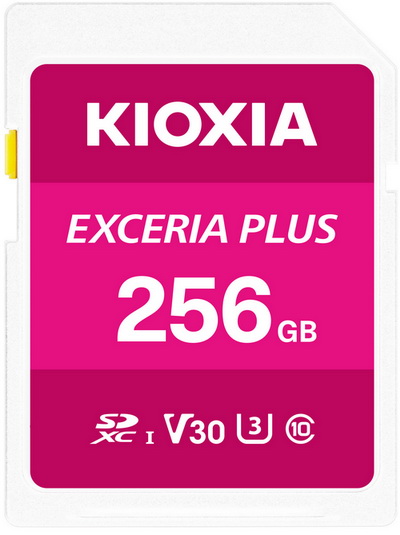
Believe it or not one of the things that used to concern people prior to purchasing a handheld camera (or even a car dash camera) was they how much extra they'd need to spend on an SD/microSD card. This was of course many years back but it recently came to my attention that there are still people out there who still consider the extra cost of getting an SD/microSD card as too much. In reality however prices of both SD and microSD card have dropped considerably to a point where people can now find very affordable 64-128GB capacity models. KIOXIA recently updated their product lines to include the new Exceria Plus SD and Exceria High Endurance microSD card models which I’ll be testing today.
KIOXIA Europe GmbH (formerly known as Toshiba Memory Europe GmbH) is the European based subsidiary of KIOXIA Corporation, a worldwide leading supplier of Flash Memory and Solid State Drives (SSDs). Toshiba Memory is known as the Inventor of NAND flash memory in 1987 and was the first in the world to begin mass-producing it in 1991. Under its new name, KIOXIA remains a storage leader today with its BiCS FLASH 3D technology, focusing on innovation, quality and reliability. This technology is an important component in almost all electronic devices where data need to be stored. KIOXIA is leading a new era by providing advanced memory solutions to enrich people’s lives. By evolving "memory", KIOXIA creates uplifting experiences and changes the world.
Currently KIOXIA has the Exceria Plus SDXC cards (U3/V30/C10) available in 64/128/256GB capacities and the Exceria High Endurance microSDXC cards (U3/V30/C10 - U1/V10 for the 32GB capacity) available in 32/64/128/256GB capacities (both are based on the UHS-I standard). The 256GB capacity model of the Exceria Plus line can reach read-write speeds of up to 100-85MB/s whereas the 128GB capacity model of the Exceria High Endurance line can go up to 100-65MB/s (these are also the two models i have here with me). Both lines are ideal for 4k recording as well as temperature proof, x-ray proof (ISO7816-1 compliant), immune to ESD (electrostatic discharge) and share the exact shame temperature range (-25 to 85 degrees Celsius). These lines are not identical however since the Exceria High Endurance one is also water proof (IPX7) and is covered by a 3-year limited warranty (as opposed to the 5-year limited warranty of the Exceria Plus line). So, time to start our benchmarks and see exactly what you can expect from both the Exceria Plus SDXC 256GB and the Exceria High Endurance 128GB MicroSDXC card models.
SPECIFICATIONS AND FEATURES

THE EXCERIA PLUS SDXC 256GB & EXCERIA HIGH ENDURANCE MICROSDXC 128GB
As with most cards out there both samples arrived in blister packages from where you can take a quick look at the cards themselves, their capacities and their certifications.
The main features are listed at the rear right next to the performance numbers and the warranty periods.
The Exceria Plus SD 256GB card is shipped alone whereas the Exceria High Endurance 128GB model is shipped with an SD card adapter.
Both models are based on the UHS-I standard and as you can see even though the Exceria Plus is manufactured in Japan the Exceria High Endurance is manufactured in China.
TEST BED
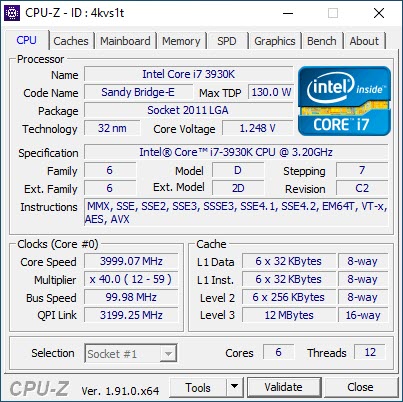

TESTING METHODOLOGY
Memory cards are pretty much identical to flash drives so to make things easier for everyone we'll be using roughly the same testing methodology to successfully record achieved read and write data transfer numbers. The benchmark suites we'll be using for our memory card tests are HD Tune Pro (Read - Write average and max speeds), AIDA 64 Engineer Edition (Average Linear Read / Random Read - Write performance), Crystal Disk Mark x64 (4GB Read / Write speeds) and ATTO (Average Read / Write speeds). Every test is repeated a total of 6 times after which the average performance numbers are recorded into our charts (0 = we were unable to complete that test).
As with all our storage reviews all tests are performed on our main rig running Microsoft Windows 10 Pro installation on a HyperX Predator 480GB PCIe SSD with all updates installed up to the day of this review (for ATTO and Crystal Disk Mark cards are formatted using the NTFS file system – however partitions need to be removed for the write tests of both AIDA64 and HD Tune Pro).
* As of April 2020, we'll be using our X299 test rig for microSDXC UHS-II (and above) memory card reviews.
TEST RESULTS - SD CARDS
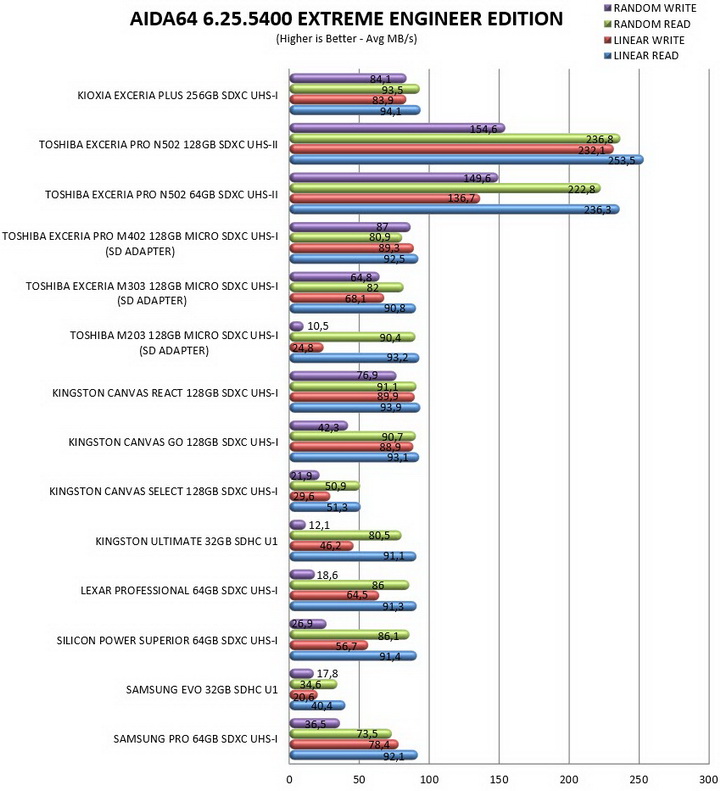
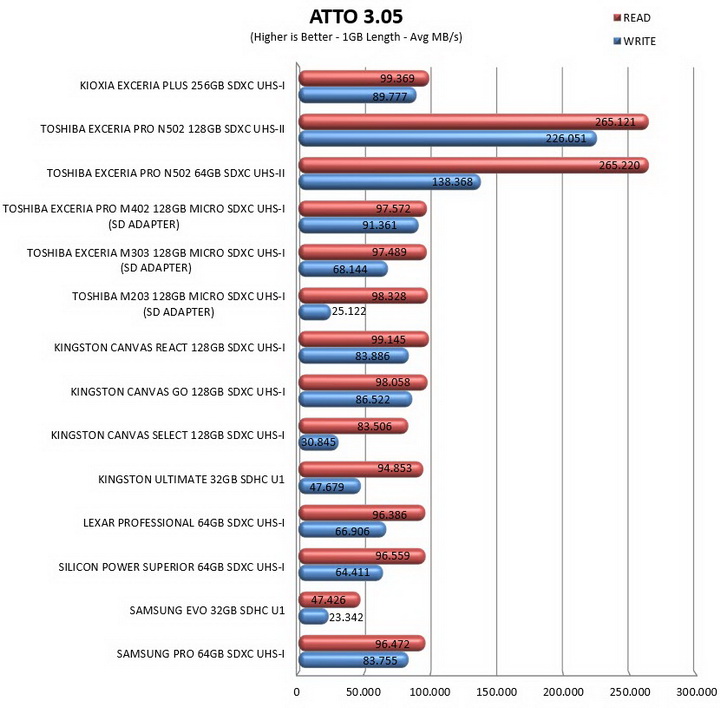
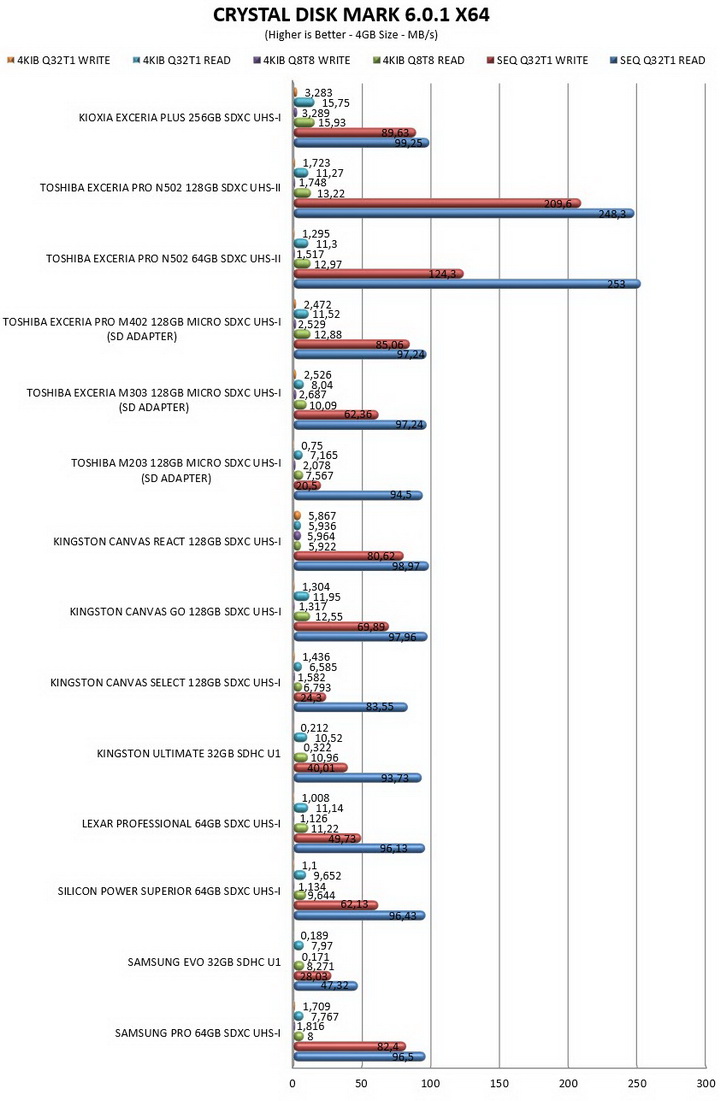
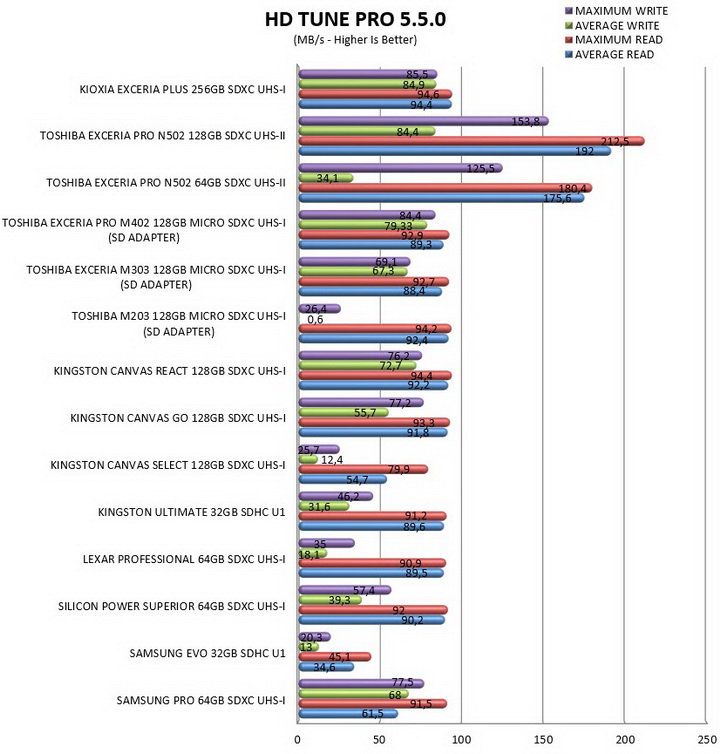
TEST RESULTS - MICROSD CARDS
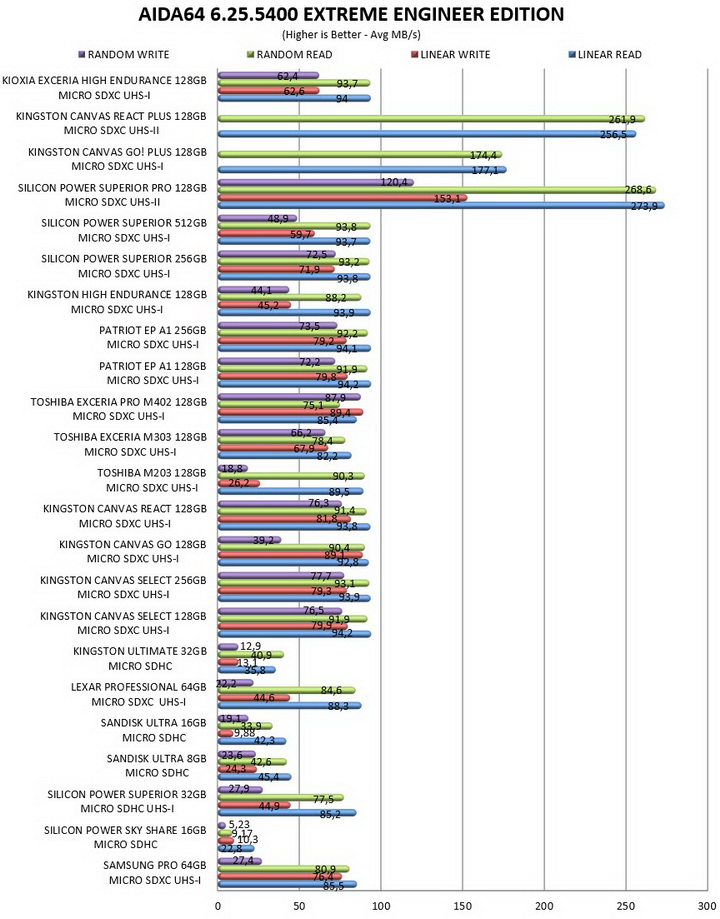
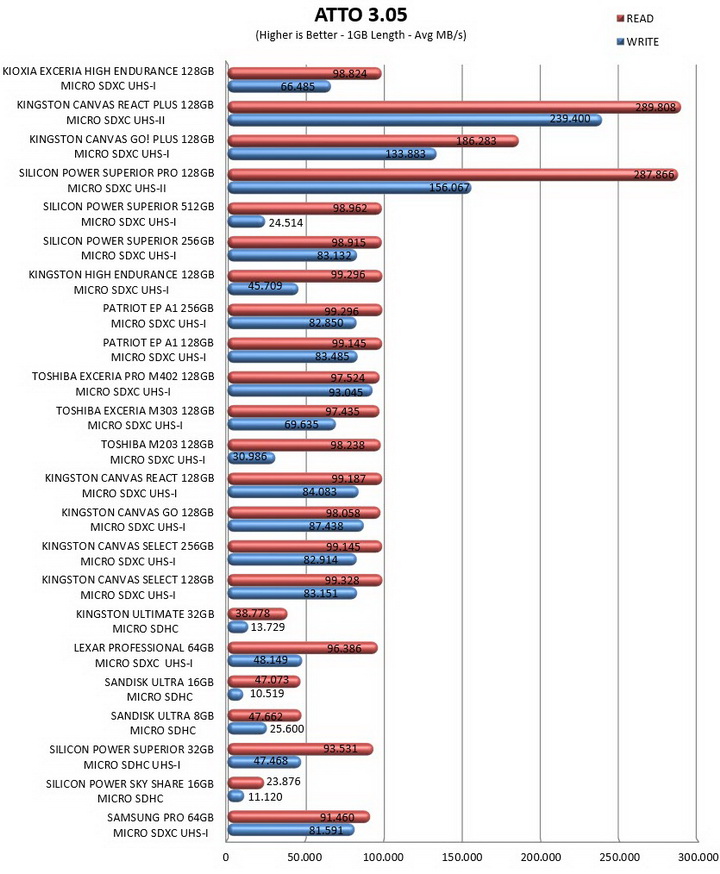
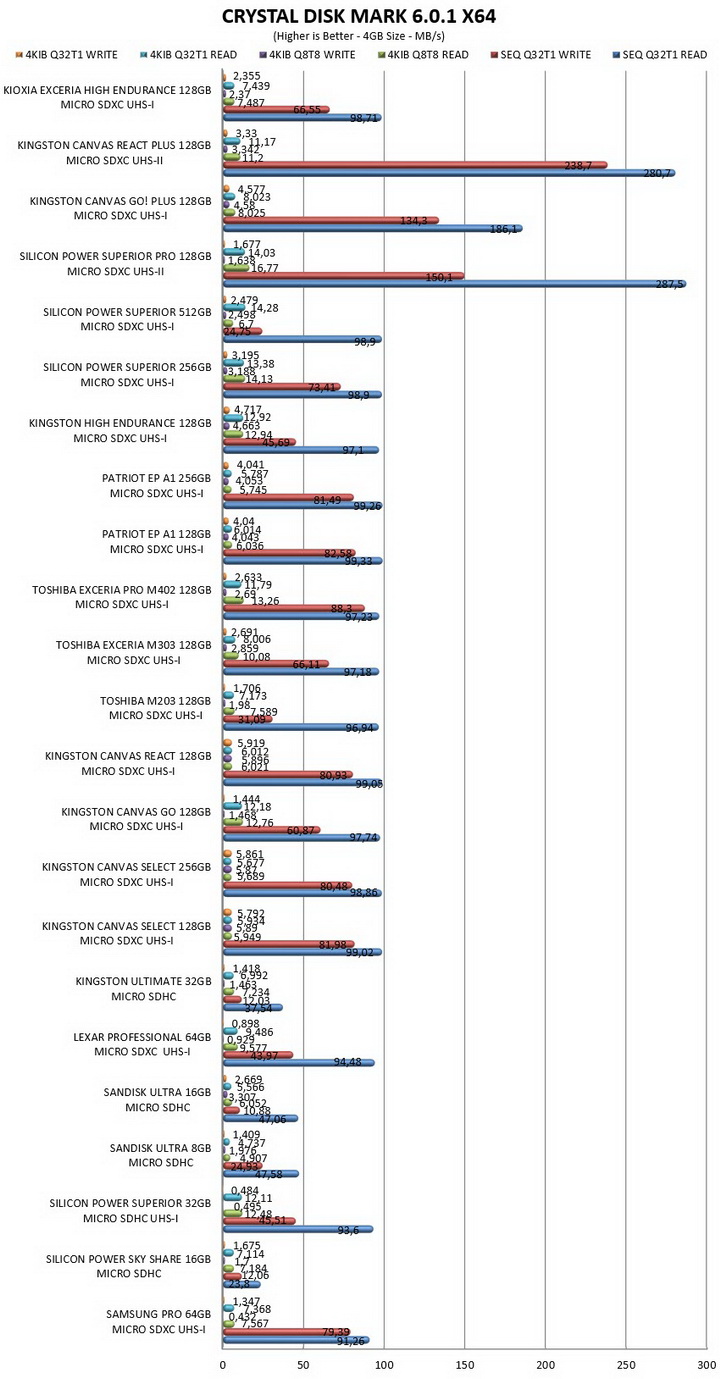
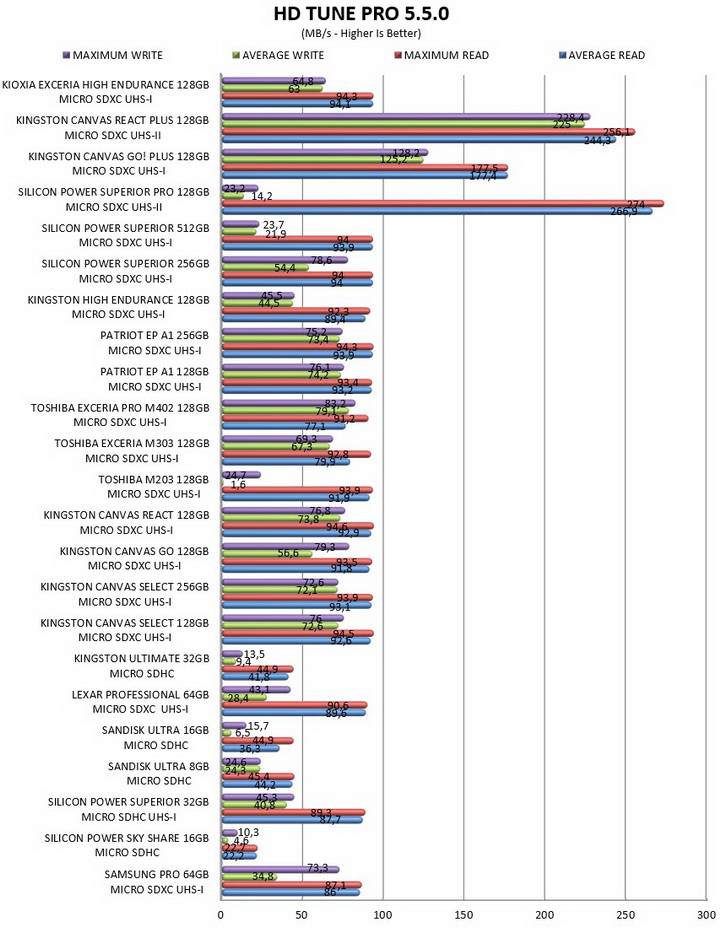
CONCLUSION
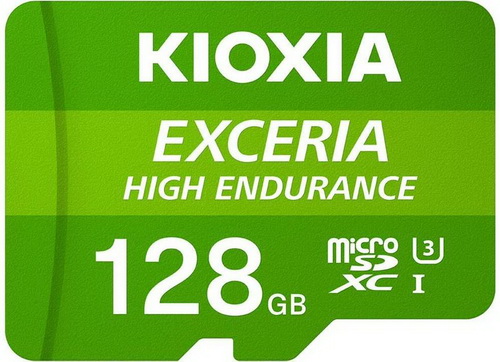
UHS-I SD and microSD cards may be nowhere close to the performance levels of their UHS-II cousins but unlike those they are compatible with every device in the market today and that is clearly what gives them the largest market share today. That being said it’s clear from the charts that both the Exceria Plus SDXC 256GB and the Exceria High Endurance MicroSDXC 128GB card models perform roughly the same as their immediate competition (high performance models) so at least in that area they don’t bring anything new to the table. Still on one hand the Exceria Plus model is made in Japan and is covered by a 5-year limited warranty whereas the Exceria High Endurance has the ideal specifications for use in harsh conditions like in dash cameras.
At the time of this review the Exceria Plus SD 256GB card retails for USD119.99 inside the USA (Amazon.com) and for around 120Euros inside the EU whereas the Exceria High Endurance MicroSDXC 128GB model retails for USD42.99 inside the USA (Amazon.com) and for around 55Euros inside the EU. These prices effectively place the new KIOXIA models a lot higher than many similar performance and capacity cards making this their sole drawback. Still, not many can match the build quality offered by Toshiba/KIOXIA (and in the case of the Exceria Plus the warranty period also) and for that both cards clearly deserve your attention.
PROS
- High Performance (For UHS I Models)
- Build Quality / Endurance
- 5 Year Limited Warranty (Exceria Plus)
- Included SD Adapter (Exceria High Endurance)
CONS
- Price (For Some)

 O-Sense
O-Sense





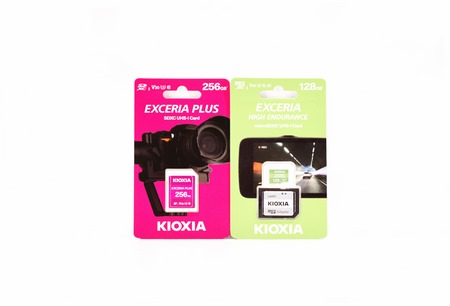
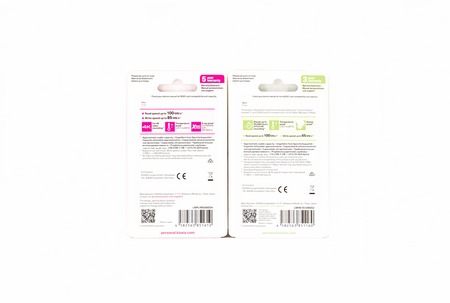
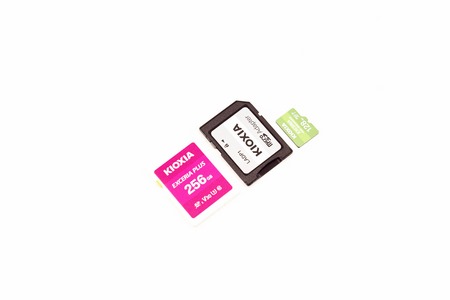
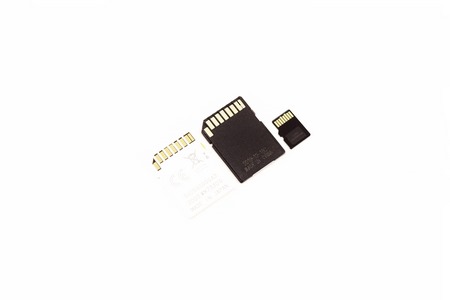


.png)

